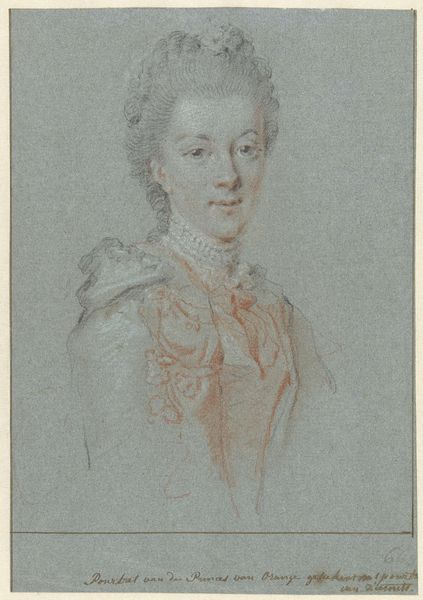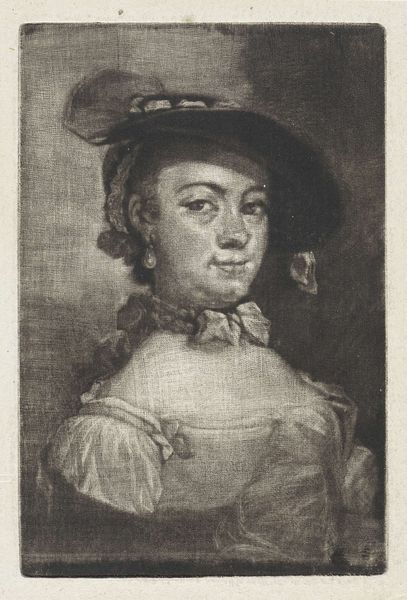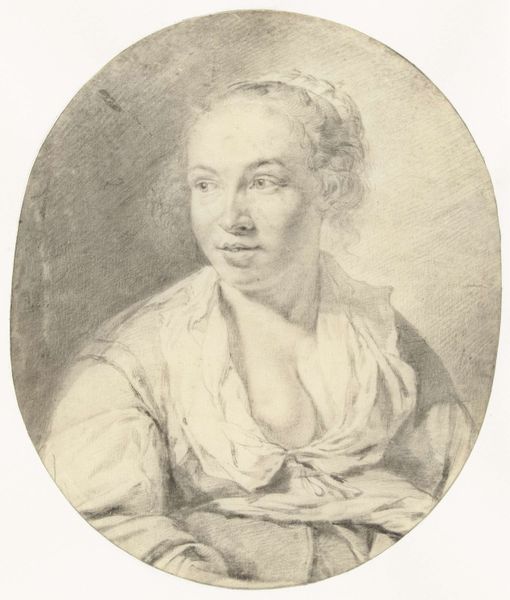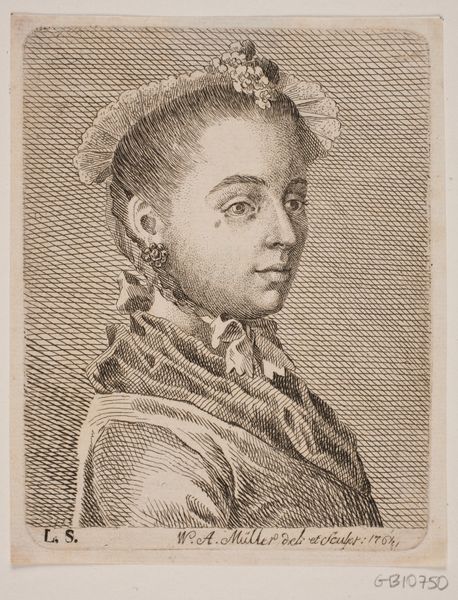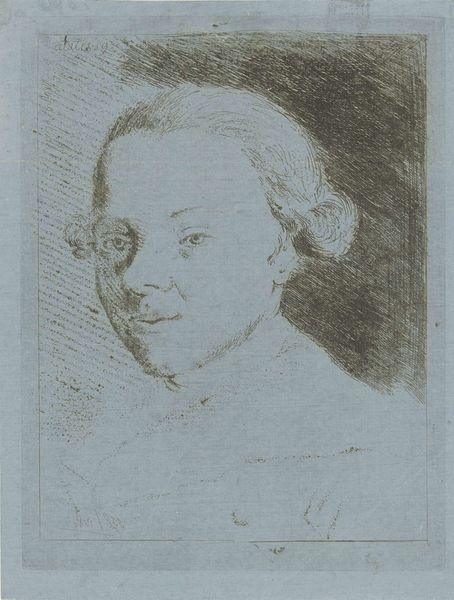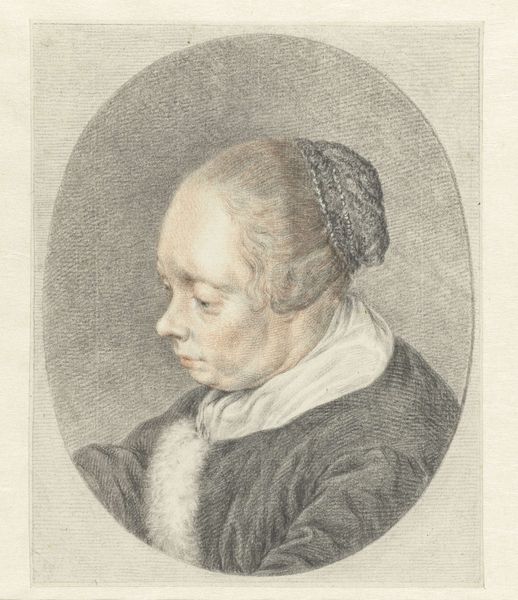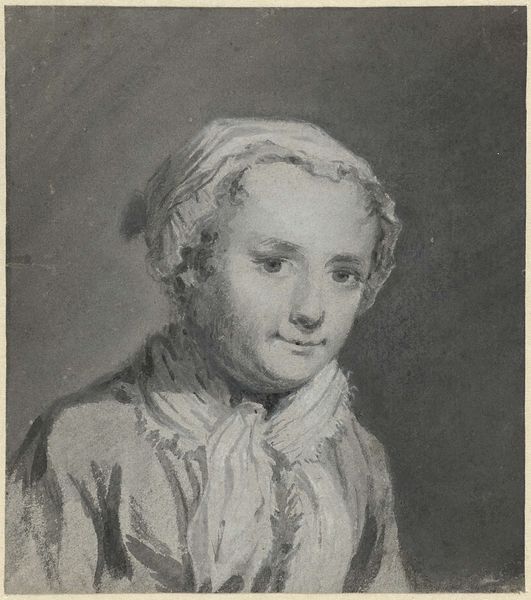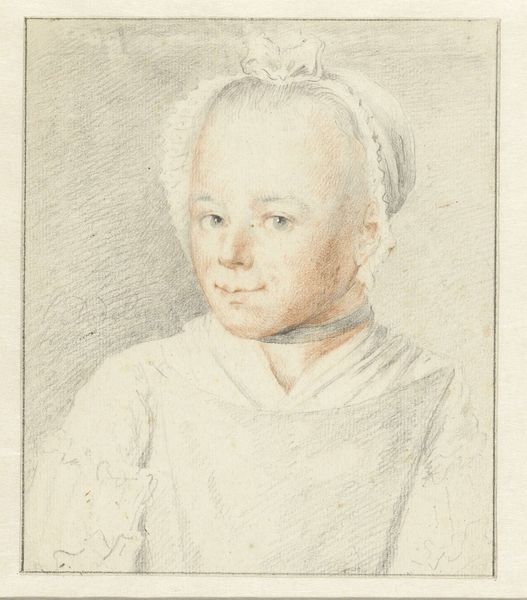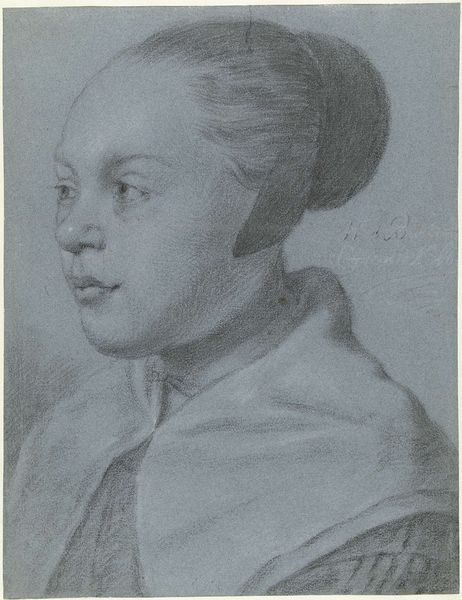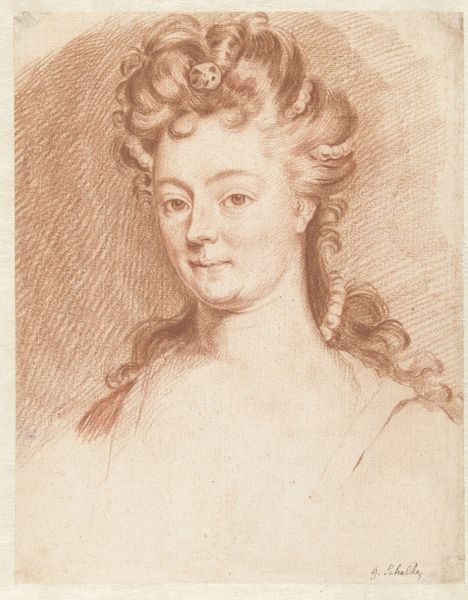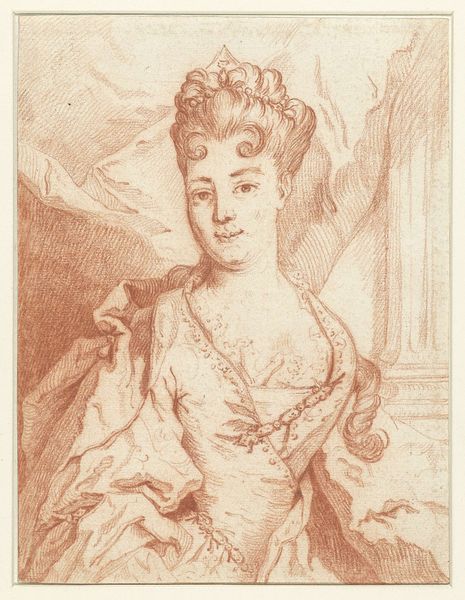
Portrait of Sophie Juliane von der Schulenburg c. 1531
0:00
0:00
drawing, paper, chalk, charcoal
#
portrait
#
drawing
#
charcoal drawing
#
paper
#
11_renaissance
#
chalk
#
portrait drawing
#
charcoal
#
northern-renaissance
#
charcoal
#
italian-renaissance
Dimensions: 512 × 388 mm
Copyright: Public Domain
Curator: Before us, we have "Portrait of Sophie Juliane von der Schulenburg," a drawing rendered circa 1531 using charcoal and chalk on paper. Editor: The muted tones give it an ethereal quality. I am struck by her gaze; there's a mix of serenity and slight melancholy that intrigues me. The texture created by the charcoal almost gives the portrait a life of its own. Curator: Indeed, these portrait drawings held a significant social function during the Renaissance, particularly in Northern Europe. They served not merely as representations but as objects of diplomacy, often exchanged between aristocratic families for marital negotiations or political alliances. Editor: Knowing that gives the gaze a new context; that her representation here serves a very concrete purpose: positioning her, quite literally, for sale. It feels quite loaded from a contemporary feminist perspective. I wonder what she herself thought about this portrayal? Curator: These drawings circulated among specific circles, often within the courts and noble families. What makes this piece remarkable is that, while artists like Cranach often flattered their subjects, there’s a remarkable naturalism here, almost an unflinching honesty. Editor: Perhaps, but her elaborate ruff and ornate bodice mark her as part of a system of wealth and privilege, and those codes still carry resonances. Are we, today, complicit in reinforcing hierarchies by admiring the rendering without acknowledging this power? Curator: The Art Institute is actively involved in rethinking this, precisely by displaying the portrait within such broader historical, theoretical, and social considerations that bring this forward for our audiences. It is important to reflect that the artist, workshops and even the subjects lived with conventions which now are contested, and that our job is to shed light on it, enabling visitors to look at art in a reflexive way. Editor: Absolutely, and hopefully prompting further dialogue about the complex role of portraiture, representation, and the continued presence—or haunting—of the past within these very halls. Curator: And with those final questions in mind, let's invite visitors to step closer, and maybe contemplate a portrait of their own making soon.
Comments
No comments
Be the first to comment and join the conversation on the ultimate creative platform.
